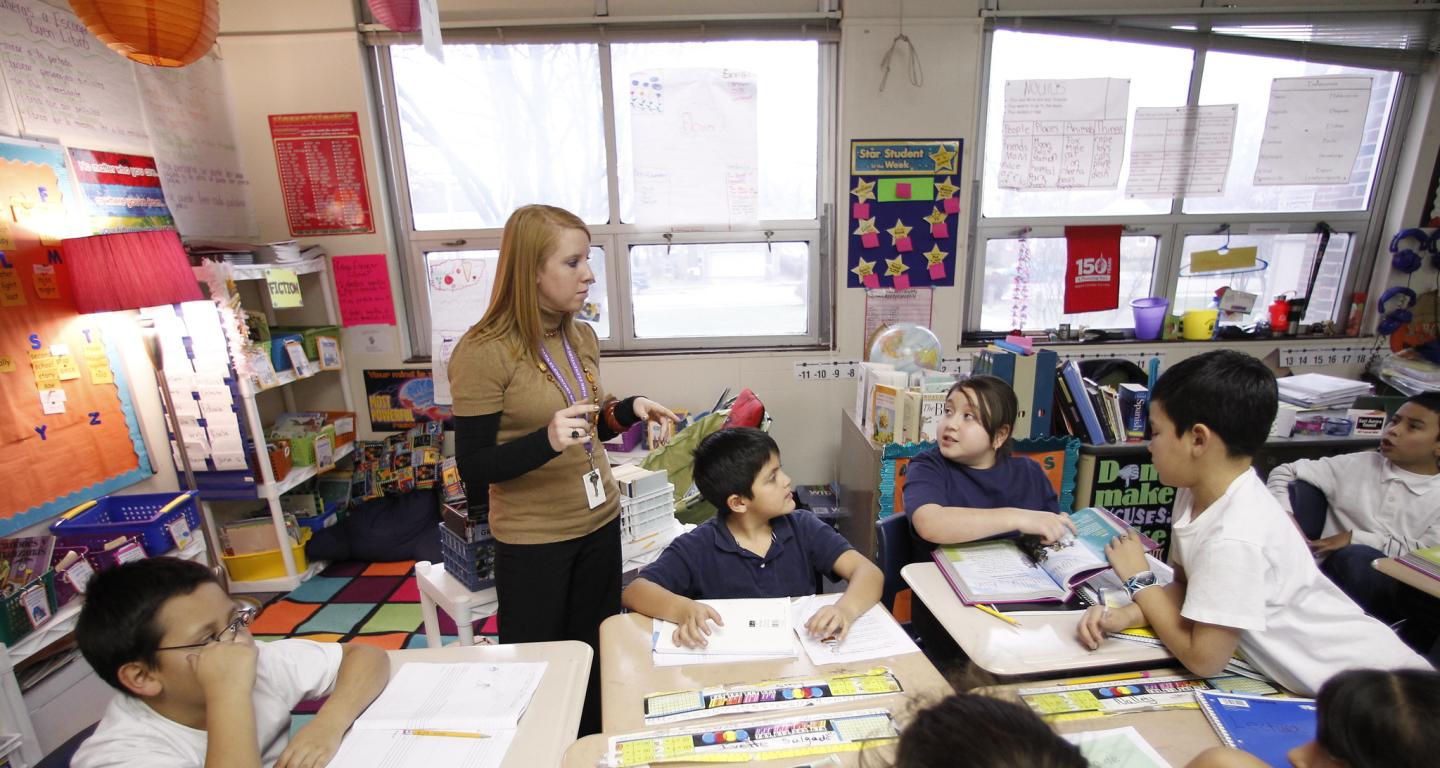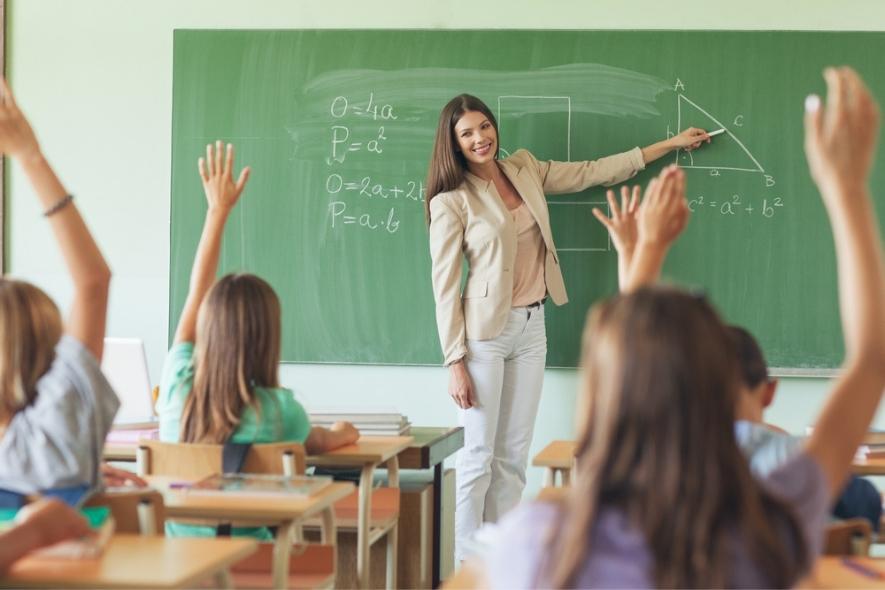Master Primary Science Concepts with Quality Tuition in Singapore
Master Primary Science Concepts with Quality Tuition in Singapore
Blog Article
A Comprehensive Guide to the Numerous Learning Methods in Primary Science Direction
The expedition of diverse learning approaches in main scientific research direction offers an opportunity for teachers to improve trainee involvement and comprehension dramatically. By examining hands-on knowing techniques, inquiry-based strategies, and collaborative techniques, we can recognize effective methods that accommodate numerous finding out designs. In addition, the combination of technology and distinguished instruction plays a crucial duty in promoting an inclusive environment. The question remains: just how can these techniques be efficiently applied in the class to optimize their effect? The answer hinges on a closer evaluation of each strategy and its implications for teaching science.

Hands-On Discovering Techniques
Hands-on learning methods play a critical role in main scientific research guideline, engaging pupils in active exploration and testing. These approaches enable students to communicate directly with products and phenomena, cultivating a much deeper understanding of clinical concepts. By using manipulatives, models, and real-life experiments, educators create an environment where trainees can observe, assume, and test their concepts.
Such techniques not only improve comprehension however likewise cultivate important thinking and analytical skills. When students join activities like developing straightforward equipments, growing seeds, or performing chemical responses, they are encouraged to ask inquiries and look for solutions with their very own observations. This experiential strategy helps to demystify intricate clinical principles, making them much more available and relatable.
Moreover, hands-on discovering advertises collaboration amongst peers, as pupils frequently operate in groups to perform experiments or share searchings for. This team effort not only enriches their knowing experience but also develops necessary social skills. Inevitably, integrating hands-on methods in main science instruction fosters a long-lasting love of understanding and interest regarding the environment, laying a solid structure for future scholastic searches in science and beyond.
Inquiry-Based Discovering
Inquiry-based understanding is a training method that encourages pupils to ask concerns, investigate sensations, and create their very own understanding of scientific concepts. This method moves the emphasis from conventional teacher-led guideline to a much more student-centered experience, where students take the initiative in their instructional journey. By fostering interest, inquiry-based knowing advertises deeper interaction with the product, enabling trainees to check out subjects in a purposeful context.
In practice, this technique usually involves hands-on experiments, monitorings, and important thinking tasks that straighten very closely with the scientific method. Pupils are urged to create theories, layout examinations, and examine information, which cultivates necessary skills such as analytical and analytic reasoning. The duty of the instructor in this structure is to help with exploration, guiding students through the inquiry procedure while motivating independent thought and cooperation.
Additionally, inquiry-based discovering nurtures a sense of possession over the understanding procedure, encouraging trainees to go after knowledge proactively. This method not just enhances understanding of clinical concepts but also promotes a long-lasting love for learning, outfitting trainees with the abilities necessary to navigate a progressively intricate world.
Collaborative Discovering Approaches
Collective understanding approaches encourage pupils to take part in purposeful communications with peers, cultivating a shared responsibility for their academic outcomes. In primary scientific research direction, these strategies motivate learners to work together to discover scientific concepts, resolve troubles, and conduct experiments (primary science tuition Singapore). By taking part in group activities, students can take advantage of varied perspectives, enabling for richer understanding and retention of clinical knowledge
One trick facet of collective learning is the focus on communication sites abilities. Students should express their ideas, listen proactively to others, and negotiate concepts, every one of which are important proficiencies in both real-world and scholastic contexts. This social interaction not just improves their understanding of scientific principles yet additionally advertises teamwork and dispute resolution abilities.
When pupils see the value of their payments within a group, they are extra likely to take ownership of their discovering journey. On the whole, incorporating collaborative knowing techniques in key science guideline cultivates a vibrant discovering setting that prepares trainees for future academic and social obstacles.
Technology Assimilation in Science
The combination of innovation in main science guideline improves learning experiences by giving ingenious devices and sources that support various teaching techniques, consisting of joint learning - primary science tuition Singapore. Making use of digital systems, simulations, and interactive applications enables pupils to engage deeply with scientific concepts, facilitating a more hands-on technique to understanding
Digital laboratories, for instance, make it possible for students to perform experiments securely and effectively, promoting inquiry-based discovering. These tools can simulate real-world clinical circumstances, permitting trainees to envision complicated processes that would certainly be tough to replicate in a conventional classroom setup. Additionally, modern technology fosters interaction and collaboration among pupils, as they can share searchings for and function together on tasks via on-line systems.
Additionally, multimedia presentations and educational video clips can enrich lessons by accommodating diverse knowing styles, making abstract concepts extra obtainable. Information evaluation devices additionally empower trainees to accumulate and translate scientific information, enhancing crucial believing abilities. Generally, the critical incorporation of innovation in main science guideline not only enhances involvement however also prepares trainees for a highly innovative culture, equipping them with essential abilities for future clinical ventures.
Distinguished Direction Techniques
Differentiated direction methods are important for dealing with the varied needs of students in main science education. These techniques enable educators to customize their training approaches to suit varying capabilities, rate of interests, and finding out styles within the classroom. By employing set apart instruction, educators can produce an inclusive environment that cultivates engagement and improves understanding of scientific principles.
One efficient strategy is to utilize adaptable organizing, which enables students to work together with peers at comparable skill levels or with varying point of views. This approach encourages peer discovering and promotes important reasoning. Furthermore, supplying choices in projects can empower pupils, allowing them to choose tasks that reverberate with their rate of interests while still satisfying curricular click over here purposes.
Moreover, incorporating tiered projects is one more beneficial technique. By making jobs with differing levels of intricacy, educators can guarantee that all trainees are suitably tested, despite their proficiency. Using developmental assessments to gauge recognizing more makes it possible for teachers to readjust their training approaches dynamically, guaranteeing that each student receives the support they require.
Ultimately, implementing set apart instruction strategies in primary science education and learning not just enhances pupil learning end results yet additionally cultivates a passion for science, preparing students for future academic quests.

Conclusion
In summary, efficient key scientific research guideline necessitates a complex technique that includes hands-on knowing, inquiry-based methods, and joint methods. The integration of modern technology and differentiated instruction better provides to diverse understanding designs, fostering a setting favorable to expedition and vital thinking.
The expedition of diverse knowing methods in primary science direction offers a possibility for teachers to improve trainee involvement and comprehension substantially.Hands-on learning methods play a pivotal function in main scientific research instruction, engaging trainees in active expedition and testing.Inquiry-based learning is an educational method that urges trainees to ask inquiries, explore sensations, and create their very own understanding of clinical ideas.Collective understanding see this here techniques empower pupils to involve in meaningful interactions with peers, promoting a common obligation for their educational outcomes. Generally, incorporating collaborative knowing techniques in main scientific research guideline grows a vibrant discovering setting that prepares students for future scholastic and social challenges.
Report this page